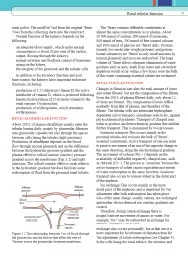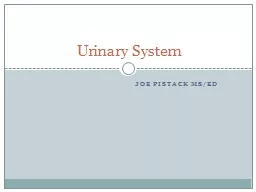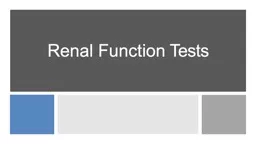PPT-Renal tubular function 37
Author : sialoquentburberry | Published Date : 2020-06-15
renal pelvis The modied uid from the original ltrate The ltrate contains diffusible constituents at ows from the collecting ducts into the renal tract almost
Presentation Embed Code
Download Presentation
Download Presentation The PPT/PDF document "Renal tubular function 37" is the property of its rightful owner. Permission is granted to download and print the materials on this website for personal, non-commercial use only, and to display it on your personal computer provided you do not modify the materials and that you retain all copyright notices contained in the materials. By downloading content from our website, you accept the terms of this agreement.
Renal tubular function 37: Transcript
Download Rules Of Document
"Renal tubular function 37"The content belongs to its owner. You may download and print it for personal use, without modification, and keep all copyright notices. By downloading, you agree to these terms.
Related Documents














